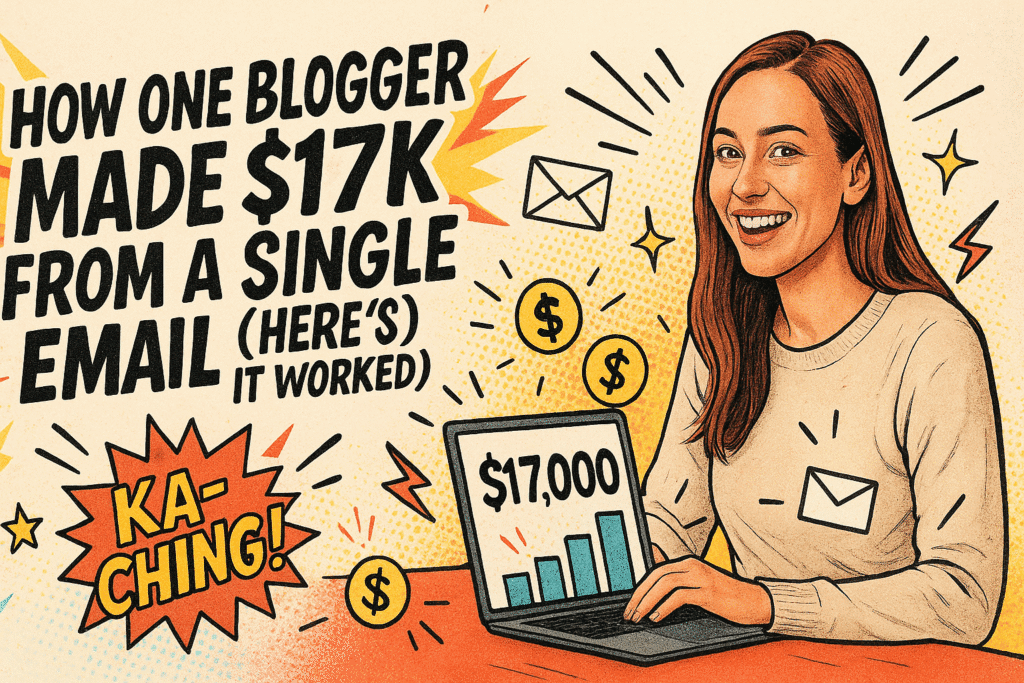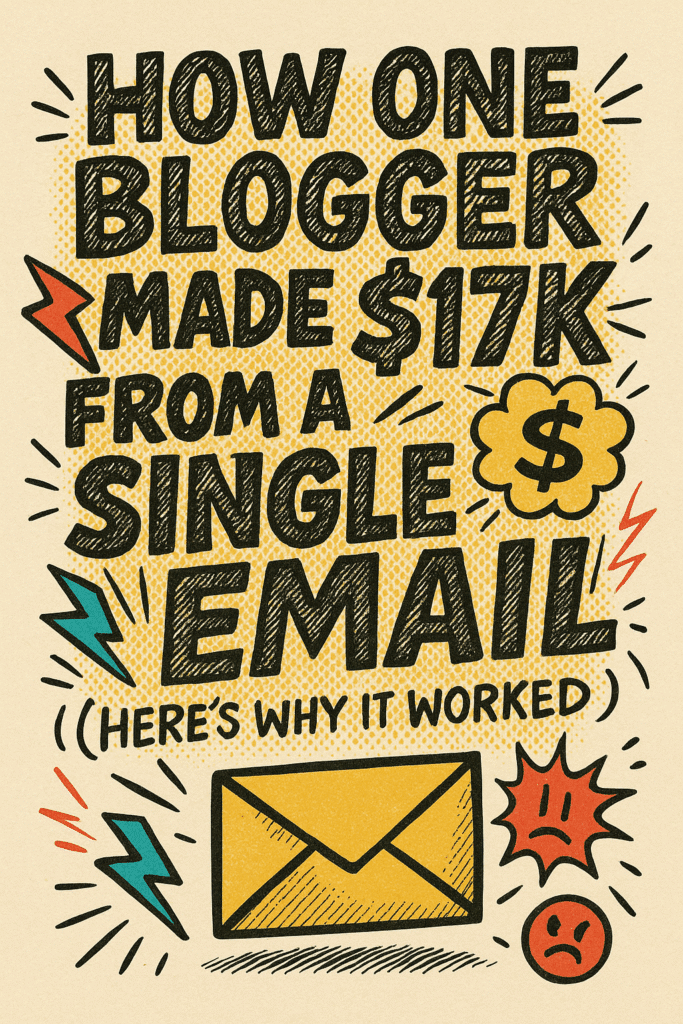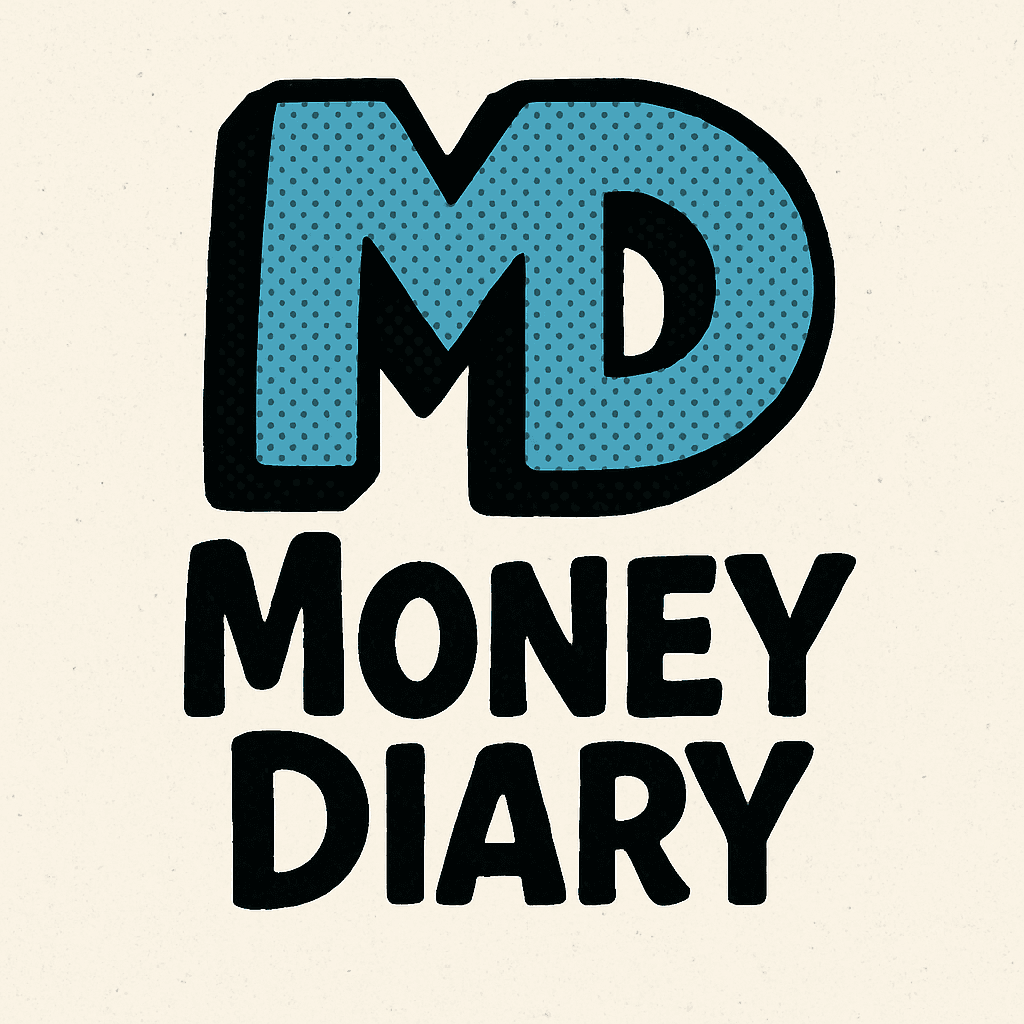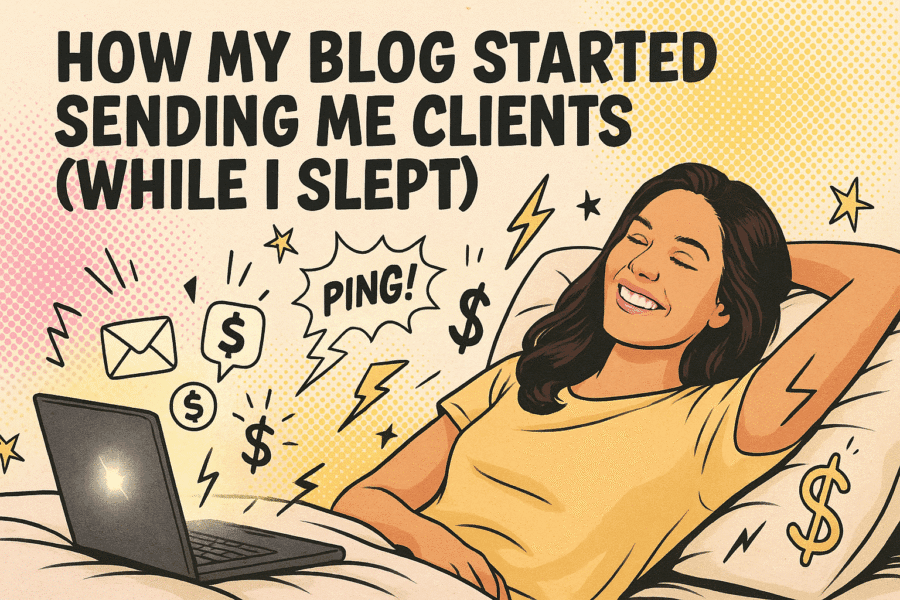
Your Email List Is the Lifeblood of Your Business — Start Treating It Like One
Quick Summary / Key Takeaways
- Your email list is the one asset you own — not an algorithm.
- Start with a simple opt-in that solves a real problem (like “3 ways to save money on food”).
- Use free tools like MailerLite to automate from Day 1.
- Email your list at least once per week to “train” your audience to expect and open.
- Boost your social media by asking for follows on your opt-in thank-you page.
- You can monetize your newsletter by charging brands for inclusion.
Email Marketing Stats Snapshot
| Email Marketing Tactic | Result | Recommended Tool |
|---|---|---|
| Weekly email sends | Higher open + click rates, list health | MailerLite, ConvertKit |
| Lead magnet opt-in | 3x increase in sign-ups | Canva, Google Docs |
| Social follow on thank-you | Builds audience cross-platform | Linktree, direct IG links |
| Welcome automation | 40%+ open rates when done well | MailerLite, Mailchimp |
| Email monetization | Up to $10K+ per send (possible) | Email + product/brand offers |
Email Marketing Comparison Table
| Email Platform | Free Plan | Automation | Best For | Monthly Cost |
|---|---|---|---|---|
| MailerLite | Up to 1,000 subscribers | Yes | Beginners + automation | Free-$10 |
| Mailchimp | Up to 500 subscribers | Limited | Brand recognition | Free-$13 |
| ConvertKit | No free plan | Advanced | Creators/courses | $15+ |
| Flodesk | No free plan | Basic | Design-focused | $35 |
Opt-In Setup Checklist
Step-by-Step: First Email Funnel
- [ ] Create a freebie tied to your blog’s core niche (e.g., budget tips, recipes)
- [ ] Use MailerLite or Mailchimp to set up your form + automation
- [ ] Write a 3-part welcome sequence
- [ ] Add a social media follow prompt to the thank-you page
- [ ] Send your first email within 48 hours — train your list early
Advanced Email Optimization Checklist
Follow-Up Actions for Growth
- [ ] A/B test subject lines monthly
- [ ] Clean inactive subscribers every 6 months
- [ ] Add “reply to this email” prompts for engagement
- [ ] Track which links get the most clicks
- [ ] Create exclusive email-only content
- [ ] Set up re-engagement campaigns for cold subscribers
✍️ Introduction:
I Watched Bloggers Make $10K+ Per Email — But That Wasn’t My Story
I know bloggers who could send a single email and make over $17,000 from it. One seasoned blogger in the keto niche once sent a single email that brought in over $17,000 in affiliate commissions. The campaign paid $8 per lead — and thousands of subscribers signed up.
That kind of result is possible, but it isn’t random luck. It takes an established, engaged list and a product that genuinely fits the audience. The takeaway? Email is powerful — but only if you’ve done the work to build trust first.
Not launches. Not giant funnels. Just a well-timed email to a warm list with an offer their readers wanted.
That wasn’t me — however, I did make money help with our household.
When I started blogging in the early 2010s, I didn’t understand how email worked. I thought having an email list was for “real” marketers or bloggers with teams. I signed up for Mailchimp, maybe sent one newsletter every few months, and wondered why my list didn’t grow or buy.
Meanwhile, I spent hours on Pinterest graphics, blog posts, Instagram posts — all driving traffic back to my site — with no system to capture it.
That traffic was coming in… and leaving. No opt-in. No welcome series. Just gone.
It wasn’t until I heard someone say,
“If your blog disappeared tomorrow, what would you still own?”
That question stuck with me.
Because the only real answer is: your email list.
When I Took Email Seriously, Everything Shifted
I started small — and you should too.
I created a super simple opt-in for my food blog: “3 Quick Weeknight Dinners.” It wasn’t fancy. It was a one-page PDF I made in Canva with three of my most popular recipes.
But it worked.
People signed up. I wrote a welcome email. Then I sent another one. I started emailing once per week — even if it was short.
And something wild happened: People replied. They clicked. They remembered me.
Over the 14+ years I’ve been building online businesses, that email list became my most consistent traffic source, sales tool, and connection point. Not because it was huge at first. But because it was mine, and it was active.
When I co-founded and sold my first blog, when I launched my traditionally published cookbook Paleo Eats, when I built my SaaS company — every major business milestone was amplified by email.
If You’re a Blogger, Email Isn’t Optional
It doesn’t matter if you’re brand new or years in. It doesn’t matter if you sell something yet.
Email is how you:
- Turn readers into regulars
- Launch digital products
- Get feedback before building anything
- Drive traffic on demand
- Make real, repeat income
- Work with brands who will pay to be featured
In this guide, I’m going to walk you through exactly how to:
- Start your email list without tech headaches
- Create a simple, smart opt-in (no fluff)
- Train your audience with weekly sends
- Use free tools to automate early
- Make your thank-you pages work harder
- Set yourself up for long-term income
This isn’t about doing it perfectly. This is about doing it consistently.
Let’s dive in.
Table of Contents
Why email is the most important part of your blog
Direct Answer: Because it’s the only audience you own. Social platforms come and go. SEO traffic rises and falls. Your email list is permanent — if you nurture it.
Deeper Insight: The most successful bloggers use their email list as their primary sales and traffic engine. It’s the easiest way to test new ideas, launch products, drive affiliate clicks, or promote new content. I’ve seen Pinterest traffic disappear overnight due to algorithm changes, but a solid email list keeps converting regardless of external factors.
Real Results: When I launched my cookbook Paleo Eats, my email list was responsible for 60% of initial pre-orders. Without paid ads or PR campaigns, just one email to my subscribers generated more sales than months of social media posts. Similarly, when I co-founded my SaaS business, our email list provided the initial customer base that validated our concept.
Expert Insight: Think of your blog as a funnel and your email list as the bucket. All your content, SEO efforts, and social media should be designed to fill that bucket. Once someone’s on your email list, you control the relationship — not Facebook, not Google, not Pinterest.
Takeaway: Want real control over your income? Start and protect your list like your business depends on it, because it does.
What kind of opt-in freebie should you offer?
Direct Answer: Offer a quick win. Something that solves a small but real problem your reader has today — not tomorrow, not next week.
Strategic Approach: Your opt-in should be the “appetizer” to your blog’s main course. If you blog about budgeting, don’t create a 47-page financial planning guide. Create a “Weekly Grocery Planner + $25 Sample List.” If you’re a food blogger, offer “3 No-Cook Meals for Busy Nights” instead of a comprehensive cookbook.
Real Results: My most successful opt-in was stupidly simple: a one-page PDF with three quick dinner recipes. It converted at 8% compared to my previous elaborate “Ultimate Meal Planning Guide” that converted at 2%. Why? Because people wanted immediate help, not homework. Tools like Canva or even Google Docs work perfectly — don’t overthink the design.
Pro Tips from Experience: Include your blog name or URL on the document itself. Add a note like “More recipes at [YourBlog.com]” so even if they lose the email, they remember where it came from. I’ve gotten blog traffic months later from people who kept my PDFs bookmarked.
Takeaway: Give away value now so you can earn attention (and sales) later. One page that helps beats ten pages that overwhelm.
Which email platform is best when you’re starting out?
Direct Answer: MailerLite for most bloggers. It has the best free plan (1,000 subscribers), solid automation, and doesn’t feel overwhelming.
Platform Breakdown: I’ve used them all over 14+ years. Mailchimp is familiar but limits automations on the free plan. ConvertKit is powerful but expensive for beginners. Flodesk is pretty but lacks functionality. MailerLite hits the sweet spot — professional features without the complexity or early costs.
Real Experience: I started with Mailchimp in 2010, switched to ConvertKit when I had budget, then moved to MailerLite when I launched Money Diary because I wanted to focus on content, not fighting with complicated funnels. The transition was seamless, and the interface actually makes me want to send emails instead of dreading it.
Technical Reality: Whatever you choose, the most important features are: easy form creation, basic automation (welcome series), decent templates, and reliable delivery. All major platforms handle these basics. The fancy stuff matters later when you’re making real money.
Takeaway: Pick MailerLite, set it up today, and start collecting emails. You can always migrate later, but you can’t get back the subscribers you didn’t capture.
How often should you email your list?
Direct Answer: Once per week is the golden standard. It keeps your list warm and engaged without overwhelming anyone.
Psychology Behind Frequency: Weekly emails train your subscribers to expect and look for your content. Monthly feels forgotten, daily feels spammy for most niches. I learned this the hard way — when I sent sporadically, open rates dropped to 8%. When I committed to weekly, they climbed to 22% and stayed there.
Real Results: My most profitable year included 52 weekly emails, even when I had “nothing to say.” Those “filler” emails often got the best responses because they felt more personal and conversational. One email about struggling to meal plan generated 47 replies and led to three coaching clients.
Overcoming Email Anxiety: Start with this rule: even a two-paragraph email with one tip or link counts. You’re not writing War and Peace. Share a quick story, link to your latest blog post, or recommend something you genuinely love. The consistency matters more than perfection.
Takeaway: Weekly emails = trust, engagement, and future revenue. Miss a week occasionally, but make weekly your default.
What should you say in your weekly emails?
Direct Answer: Personal story + helpful tip + one clear call to action. Keep it simple and conversational.
Email Formula That Works: Start with a hook (question, observation, or mini-story), share 2-4 sentences of insight or experience, then include one link or request. For example: “I burned dinner again last night, which reminded me why I love my go-to backup plan. Here are three meals you can make with zero cooking → [link to blog post].”
Content Ideas from 14+ Years: Link to your new blog post with context about why you wrote it. Share an affiliate product you actually use (with honest pros/cons). Tell a behind-the-scenes story about your business or life. Ask a question and encourage replies. Share a free resource or tip you haven’t posted publicly.
Engagement Secrets: End emails with questions like “What’s your biggest challenge with [topic]?” or “Hit reply and tell me…” Replies boost your deliverability and give you content ideas. Some of my best blog posts came from email replies.
Takeaway: You’re building relationships, not writing dissertations. Be helpful, be yourself, and be consistent.
How do you set up an email welcome sequence?
Direct Answer: Create a 3-email automation that delivers your freebie, builds trust, and sets expectations for future emails.
The 3-Email Welcome Formula: Email 1 (immediate): Welcome + freebie delivery + “I’m so glad you’re here.” Email 2 (2 days later): Value-packed tip or story that builds trust and showcases your expertise. Email 3 (4 days later): About you, what to expect, and maybe a soft introduction to your products or services.
Real Implementation: When I revamped my welcome series for Money Diary, I included a question in email #1: “What’s your biggest challenge with making money online?” This simple addition increased my reply rate by 300% and gave me months of content ideas. The responses also helped me understand my audience better than any survey.
Technical Setup: In MailerLite or Mailchimp, create a new automation triggered by form signup. Write your emails in advance, set the timing (I recommend 0 days, 2 days, 4 days), and test it by subscribing with a throwaway email address. Always check that your freebie link works.
Takeaway: Your welcome series is your first impression and chance to turn a subscriber into a fan. Make it count.
How can your opt-in thank you page grow your social following?
Direct Answer: After someone signs up, immediately direct them to follow you on Instagram, TikTok, or Pinterest while they’re in “action mode.”
Psychology of the Moment: Someone just took action to get your freebie — they’re engaged and interested. Instead of a boring “check your email” message, give them something else valuable to do. This is when they’re most likely to follow you on social platforms.
Proven Copy Formula: “Thanks for signing up! Your freebie is heading to your inbox. While you wait, come hang with me on Instagram for daily [your niche] tips → [direct link].” I also add something like “I share behind-the-scenes stuff there that doesn’t make it to the blog.”
Real Results: This strategy grew my Instagram following by 40% in six months without any other changes. The followers I gained this way were much more engaged than random hashtag followers because they already knew and liked my content enough to subscribe.
Technical Implementation: Most email platforms let you customize the thank-you page. Add your social links, maybe a photo of yourself, and specific language about what they’ll find when they follow. Use tools like Linktree if you want to promote multiple platforms.
Takeaway: Use every interaction to multiply your reach. Warm followers convert better than cold ones.
How do bloggers actually make money from email?
Direct Answer: Through product promotions, affiliate marketing, sponsored content, and brand partnerships. Your engaged email list becomes your sales force.
Revenue Streams I’ve Used: Affiliate commissions from products I genuinely recommend (kitchen tools, courses, books), sponsored newsletter inclusions where brands pay $500-2000 to be featured, sales of my own digital products and courses, and service bookings for coaching or consulting. The key is building trust first, then monetizing naturally.
Real Numbers: My best-performing affiliate email generated $3,400 in commissions from a single send to 2,000 subscribers. It wasn’t salesy — I shared a genuine story about a product that solved my problem, included honest pros and cons, and let people decide. The engagement was high because it felt authentic, not pushy.
Sponsored Content Strategy: Brands will pay $200-1000+ to be mentioned in newsletters to engaged audiences. Example: “This week’s email is brought to you by [Brand]. I’ve been using their [product] for three months, and here’s what I actually think…” Always disclose partnerships and only promote products you’d use yourself.
Long-term Approach: Start by being helpful and building trust. Share affiliate links sparingly and only for products you use. As your list grows, brands will start reaching out. The money follows the value and engagement, not the other way around.
Takeaway: Email = income potential, but trust = sustainable income. Protect your relationship with your subscribers above all else.
What if your list isn’t growing — or people don’t open?
Direct Answer: Audit your opt-in relevance, subject lines, and email frequency. Most growth problems are actually value or consistency problems.
List Growth Diagnosis: If signups are low, your opt-in might not solve a real problem. Test offering something more specific and immediately useful. If you have traffic but few signups, your opt-in form might be hard to find or your copy might not clearly explain the benefit. I increased signups 3x by changing “Subscribe to my newsletter” to “Get my free meal planning template.”
Open Rate Fixes: Poor open rates usually mean boring subject lines or inconsistent sending. Test curiosity-driven subjects like “This saved me $47 last week” or benefit-focused ones like “5-minute dinner prep hack.” Send consistently so people expect your emails. If you disappear for months then suddenly email, expect low engagement.
List Cleaning Strategy: Every 6 months, create a re-engagement campaign for subscribers who haven’t opened in 90+ days. Send something like “Should I keep sending these?” with easy unsubscribe options. It hurts to lose subscribers, but engaged smaller lists perform better than large inactive ones.
Technical Health Check: Ensure you’re not in spam folders by avoiding excessive caps, exclamation points, and “spammy” words. Include your physical address (required by law) and make unsubscribing easy. Use tools like Mail Tester to check your deliverability score.
Takeaway: Growth isn’t magic. It’s testing, tweaking, providing value, and showing up consistently until you find what resonates.
🌱 Advanced Tips / Best Practices
Content Strategy Secrets
- Use your email list to test blog post ideas before writing them — ask subscribers what they want to learn about
- Create email-exclusive content to reward subscribers and reduce unsubscribes
- Share behind-the-scenes business updates to build deeper connections
- Repurpose your best-performing emails into blog posts or social media content
Technical Optimization
- Add a P.S. line to every email — it’s often the most-read part and great for secondary CTAs
- Use link shorteners (Bitly, Pretty Links) to clean up your URLs and track clicks
- Include your headshot in email signatures to build recognition and trust
- Test sending times — Tuesday-Thursday 10am-2pm typically performs best
Monetization Maximizers
- Track which types of links get the most clicks to understand your audience preferences
- Create urgency with limited-time offers, but use it sparingly to maintain trust
- Cross-promote with other bloggers in your niche for mutual list growth
- Survey your list annually to understand their biggest challenges and tailor content accordingly
📚 Where to Learn More
If you want more templates, tools, and step-by-step tutorials to grow your email list and turn it into consistent income, Click here to explore additional resources on Money Diary.
✅ Wrap-Up / Next Steps
Your email list is the most valuable business asset you can build.
It doesn’t require ads. It doesn’t rely on algorithms. It doesn’t disappear overnight when platforms change their rules.
Here’s your action plan:
This Week:
- Choose your email platform (MailerLite recommended)
- Create one simple, helpful opt-in freebie
- Write your 3-email welcome sequence
- Add opt-in forms to your blog
This Month:
- Send weekly emails consistently
- Add social follow prompts to your thank-you page
- Start building relationships by asking questions and encouraging replies
- Begin tracking what content gets the best response
This Quarter:
- Test different subject lines and content types
- Clean inactive subscribers
- Consider your first affiliate recommendation or brand partnership
- Plan your first digital product based on subscriber feedback
You never know when that list will become your biggest income source, but I can guarantee it won’t happen if you never start.
Stop waiting for the perfect moment. Your email list is waiting.
Click here to grab my favorite email tools, templates, and step-by-step tutorials to get started today.
✍️ About the Author
Kelly Bejelly has been building online businesses for 14+ years, starting with food blogging in the early 2010s before “influencer” was even a thing. She’s the traditionally published author of Paleo Eats, has been featured in Forbes and Essence, co-founded and sold multiple digital businesses including a SaaS company, and co-founded a CPG brand that appeared on Shark Tank.
Kelly launched Money Diary to share the real, unfiltered truth about making money online—no fluff, just strategies that actually work based on over a decade of experimenting, failing, and succeeding.





Leave a Reply